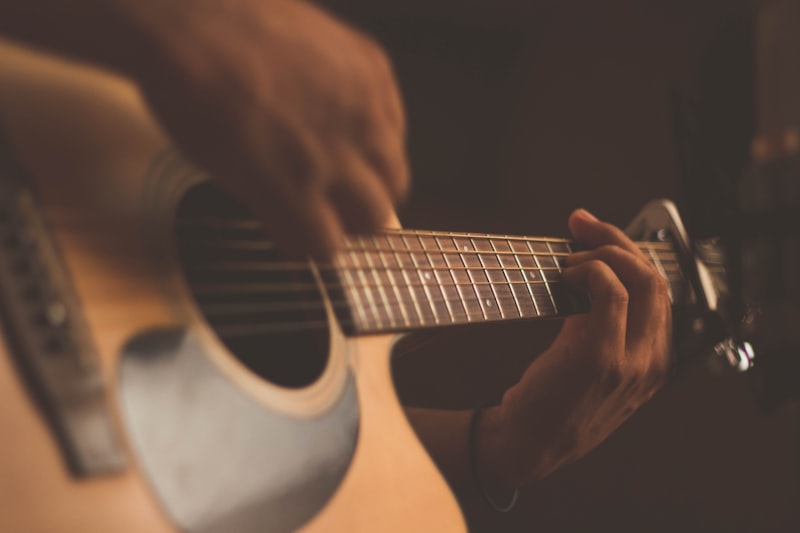The Musical Legacy of Africa: Exploring Indigenous Instruments and Rhythms

Have you ever wondered about the rich musical heritage of Africa? The continent is a treasure trove of diverse rhythms, enchanting melodies, and unique instruments that have captivated people for centuries. In this article, we will delve into the fascinating world of African music, exploring the indigenous instruments and rhythms that form its vibrant tapestry.
One of the most remarkable aspects of African music is its deep connection to nature and daily life. Traditional instruments are often crafted from materials readily available in the local environment, such as wood, gourds, animal skins, and seeds. These organic elements give African music its authentic and earthy sound.
Let’s start our journey by discovering some of the iconic instruments of Africa. The djembe, a goblet-shaped drum, holds a special place in African culture. Its versatile tones can mimic the human voice, making it an expressive instrument in storytelling and ceremonies. As you listen to the rhythmic beats of the djembe, you can almost feel the heartbeat of Africa itself.
Another instrument that resonates with the soul of Africa is the kora. This mesmerizing stringed instrument consists of a large calabash gourd covered with cow skin, supporting a long neck with 21 strings. When played, the kora produces a hypnotic sound that evokes the vast landscapes and ancient traditions of the continent.
African music is not just about individual instruments; it is also about the intricate interplay of rhythms. Different regions of Africa have developed their own rhythmic patterns, each with a distinct character and purpose. From the energetic beats of West African highlife music to the complex polyrhythms of Central African drumming, African music showcases the diversity and creativity of its people.
Beyond its cultural significance, African music has had a profound influence on various genres worldwide. The infectious rhythms and vibrant melodies have found their way into jazz, reggae, blues, and even contemporary pop music. Artists like Miriam Makeba, Fela Kuti, and Salif Keïta have brought the soul of Africa to global audiences, spreading its joy and messages of unity.
The musical legacy of Africa is a testament to the continent’s rich cultural heritage and artistic expression. By exploring indigenous instruments and rhythms, we can appreciate the deep connection between African music and daily life. So next time you listen to the enchanting sounds of African music, let yourself be carried away by the spirit of this remarkable musical journey.
Harmonizing Heritage: Unearthing Africa’s Musical Legacy of Indigenous Instruments and Rhythms
Introduction:
Have you ever wondered about the rich and diverse musical heritage of Africa? Beyond its breathtaking landscapes and vibrant cultures, Africa is also home to a treasure trove of indigenous instruments and rhythmic traditions that have captivated people for centuries. In this article, we delve into the fascinating details of Africa’s musical legacy, exploring the harmonious blend of unique instruments and rhythmic expressions that define the continent’s cultural tapestry.
The Vibrant World of African Instruments:
Africa boasts an extraordinary array of indigenous instruments that span across its vast geography. From the resounding beats of the djembe in West Africa to the melodic sounds of the mbira in Southern Africa, each instrument has a story to tell. These instruments are crafted with precision and artistry, often using natural materials such as wood, animal skins, and gourds. They produce enchanting melodies and powerful rhythms that echo the spirit of the African people.

Rhythms that Stir the Soul:
At the heart of Africa’s musical heritage lies its mesmerizing rhythms. Just as every tribe and community has its own language, they also possess their unique musical dialects. The polyrhythmic beats intertwine effortlessly, immersing listeners in a symphony of sound that evokes a sense of unity and celebration. The intricacies of African rhythms can be felt in the energetic dances and rituals performed by communities during social gatherings and important ceremonies.
Preservation and Modern Evolution:
While Africa’s musical legacy is deeply rooted in tradition, it continues to evolve and adapt to contemporary times. Talented musicians and artists are infusing ancient rhythms with modern elements, creating captivating fusions that bridge the gap between generations. These innovative approaches not only honor the past but also breathe new life into Africa’s musical heritage, allowing it to resonate with audiences around the world.
Impact on Global Music:
Africa’s influence on global music cannot be overstated. Its rhythms and instruments have seeped into various musical genres, captivating audiences across continents. From the infectious Afrobeat rhythms that inspire dance floors to the soulful melodies of African-inspired jazz, the continent’s imprint is indelibly woven into the fabric of contemporary music.

Conclusion:
As we delve into Africa’s musical legacy, we uncover a world filled with wonder, diversity, and cultural richness. The harmony created by indigenous instruments and rhythmic expressions resonates deeply within the hearts of its people and continues to captivate a global audience. Let us celebrate and embrace Africa’s musical heritage, cherishing it as a testament to the enduring power of human creativity and the unbreakable bond between culture and identity.
Beyond the Beat: Discovering Africa’s Ancient Melodies and Timeless Musical Traditions
Introduction:
Step into a world where rhythm runs deep in the veins of a continent. Africa, a land of rich cultural heritage, unveils its mesmerizing symphony of ancient melodies and timeless musical traditions. From the beating drums to the soul-stirring chants, Africa’s musical tapestry is a captivating journey that transcends time and space.
Unveiling Hidden Treasures:
Amidst the vibrant landscapes and diverse communities, Africa conceals a treasure trove of musical marvels. Each region boasts its unique sonic signatures, echoing the stories of generations past. Let us embark on a sonic adventure and immerse ourselves in the enchanting world of Africa’s ancient melodies.
The Pulse of Tradition:
Africa’s musical heritage is deeply rooted in tradition, serving as a vessel for storytelling, spiritual connection, and cultural preservation. The rhythmic cadence of djembe drums in West Africa reverberates through history, carrying the spirit of ancestral wisdom. Meanwhile, the melodic kora strings plucked delicately in Senegal evoke the serenity of vast landscapes and embody the resilience of its people.
Harmony of Diverse Influences:
Africa’s musical landscape is as diverse as its people. The interplay of different cultures, languages, and experiences has given birth to a tapestry of sounds that celebrates unity in diversity. From the Afrobeat fusion of Nigeria’s Fela Kuti to the ethereal mbira music of Zimbabwe, each region adds its distinct flavor to the African symphony, creating a harmonious blend that captivates the senses.
Preserving Cultural Identity:
In an era of globalization, Africa’s musical traditions serve as a powerful tool in preserving cultural identity. These ancient melodies carry the essence of African heritage, acting as a bridge between past and present. They remind us of the importance of honoring our roots and embracing the richness of diversity.
Conclusion:
Beyond the beat, Africa’s ancient melodies and timeless musical traditions beckon us to explore a world of captivating soundscapes. From the rhythmic drumming to the melodic chants, the continent’s musical tapestry is a testament to the power of culture and heritage. Let us embrace this sonic voyage and discover the enchanting rhythms that echo through the heart and soul of Africa.
Journey into Sound: Exploring the Rich Tapestry of African Indigenous Instruments and their Cultural Significance
Have you ever wondered about the mesmerizing sounds that resonate from the heart of Africa? The continent’s vast cultural heritage is intricately woven into its indigenous instruments, creating a rich tapestry of musical expression. Join us on a fascinating journey as we explore the captivating world of African indigenous instruments and delve into their profound cultural significance.
At the very core of African music lies a diverse array of traditional instruments, each with its own unique voice and purpose. From the soul-stirring beats of the djembe drum to the enchanting melodies of the mbira, these instruments hold the key to unlocking the stories and traditions of countless African communities.
One such remarkable instrument is the kora, a twenty-one-stringed harp-like instrument that originated in West Africa. Its delicately plucked strings produce a magical blend of melody and rhythm, painting vivid soundscapes that transport listeners to distant lands. For generations, the kora has been an integral part of storytelling, allowing griots, the revered oral historians, to pass down tales from one generation to the next.
In Southern Africa, the mbira takes center stage. Often referred to as the “thumb piano,” this handheld instrument produces a mesmerizing sound that resonates deeply within the soul. Used in spiritual ceremonies and social gatherings alike, the mbira carries a profound cultural significance. It is believed to bridge the gap between the physical and spiritual realms, providing a conduit for ancestral communication and communal harmony.
Venturing into East Africa, we discover the hypnotic rhythms of the balafon. Resembling a xylophone, this wooden instrument is struck with mallets, creating a cascade of lively tones. Traditionally played during celebratory occasions, the balafon infuses joy and exuberance into African festivities, bringing communities together through shared rhythm and dance.
As we embark on this sonic voyage, it becomes evident that African indigenous instruments are not merely objects of musical expression. They serve as vessels of history, spirituality, and cultural identity. With each note, they preserve the ancient wisdom and traditions of diverse African communities, fostering pride and a deep sense of belonging.

So, let us embrace the enchanting melodies and rhythmic symphonies of these magnificent instruments. Let us honor the richness of African culture and embark on a lifelong exploration of its musical treasures, forever captivated by the soul-stirring stories that resonate from within their strings and keys.
From Djembe to Kora: Delving into Africa’s Vibrant Music Scene Rooted in Indigenous Instruments

Have you ever wondered about the rich musical heritage of Africa? Step into the captivating world where rhythmic beats and soulful melodies intertwine, creating an enchanting music scene deeply rooted in indigenous instruments. In this article, we will explore the fascinating journey from Djembe to Kora, unveiling the essence of Africa’s vibrant musical tapestry.
Let’s start with the Djembe, a drum that hails from West Africa. Crafted from a single piece of carved wood and covered with goat or cow skin, the Djembe produces a mesmerizing range of sounds. Its deep, booming bass notes thump through the air, while the sharp slaps and resonating tones add layers of complexity to the rhythm. As skilled hands strike the Djembe’s surface, it comes alive, inviting listeners to sway to its primal energy.
Moving on to the Kora, a stringed instrument originating from the Mandinka people of West Africa. Picture a large gourd with a long neck and 21 strings, each carefully plucked by nimble fingers. The Kora’s melodies weave tales of love, nature, and ancient wisdom, evoking emotions that transcend language barriers. Its ethereal sound resonates with such clarity that it seems to carry the very heartbeat of Africa itself.

As we delve deeper into Africa’s music scene, we discover an array of other remarkable instruments. The Balafon, a wooden xylophone-like instrument, dances with playful melodies, while the Talking Drum imitates human speech, relaying messages across vast distances. The Mbira, also known as the thumb piano, emits delicate jingles akin to raindrops on leaves, and the Shekere, a beaded gourd rattle, adds a percussive sparkle to the symphony.
Africa’s indigenous instruments not only produce captivating sounds but also serve as cultural symbols. They connect communities, tell stories of triumph and struggle, and preserve ancient traditions. Through their rhythmic expressions, indigenous musicians convey a sense of identity, unity, and resilience.
So, the next time you hear the enchanting beats of an African drum or the delicate strumming of a Kora, let yourself be transported to a realm where music transcends boundaries. Experience the vibrant tapestry of Africa’s musical heritage, where each instrument carries the heartbeat of a continent and whispers the stories of generations past.




